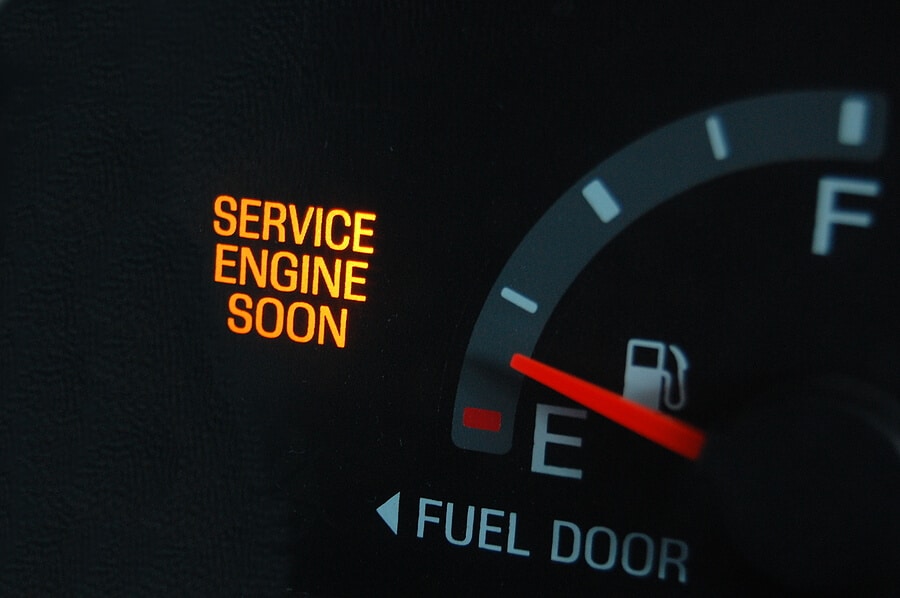
A common complaint on any vehicle is the check engine light. The control module sends and receives signals from various sensors to keep the engine running efficiently. If the control module senses that something is out of range, it will try to correct it. If it cannot correct the issue, it turns the check engine light on.
If your vehicle’s check engine light is on, contact Mevert Automotive & Tire Center to schedule an appointment to diagnose and repair the problem.
Most of the sensors have to do with the emissions system. The engine is set up so that it runs as efficiently as possible with the proper air to fuel ratio. The system has two types of sensors: Those that check for abnormalities while the system is working and those that read information and send it to the control module so that it can adjust the air and fuel.
For example, a knock sensor monitors the engine for detonation. If it senses detonation, it will send a signal to the control module to adjust the timing and / or the air to fuel mixture. On the other hand, a MAP sensor measures the air going into the engine and tells the computer to adjust the fuel mixture according to the barometric pressure.
Our ASE Certified diagnostic technician has the dealer-level diagnostic equipment to help determine the problem. It’s not as easy as plugging into the control module, reading the code and replacing a sensor.
In most cases, the sensor is not the issue. The sensor’s out-of-range reading is the issue. For example, if your vehicle throws an oxygen sensor code, in most cases, it’s not the sensor itself, but something causing the mixture to be rich or lean as it passes over the oxygen sensor. If the system is reading rich, you most likely have a misfire in one of the cylinders on that bank. It could be caused by a bad plug, a bad wire or a bad ignition coil. A lean signal could mean a bad injector or a vacuum leak`.
In rare cases, the oxygen sensor itself could have failed, the wiring between the sensor and the control module could have an open, or the control module itself could be failing.
Our ASE Certified technicians will use their training and years of experience to determine the true cause of your check engine light, and make the appropriate repair.
Even if your vehicle seems to be running properly when the check engine light is on, you should have it checked out. Sometimes the vehicle will run properly, but something is “off.” If that something is timing or other engine issues, you could end up doing more damage to your vehicle. For example, the cam phasers or the cam phaser solenoid could fail. The control module sends a camshaft sensor code. This system is part of the variable valve control timing and cylinder deactivation. If the timing is far enough off, you could damage the engine.
Contact the Mevert Automotive & Tire Center auto repair shop in Steeleville Il. for an appointment when your vehicle’s check engine light illuminates.







Mevert Automotive & Tire Center
Address:
1014 West Broadway, Steeleville, IL 62288
Hours:
Mon – Fri: 8am — 5pm
visibility_offDisable flashes
titleMark headings
settingsBackground Color
zoom_outZoom out
zoom_inZoom in
remove_circle_outlineDecrease font
add_circle_outlineIncrease font
spellcheckReadable font
brightness_highBright contrast
brightness_lowDark contrast
format_underlinedUnderline links
font_downloadMark links